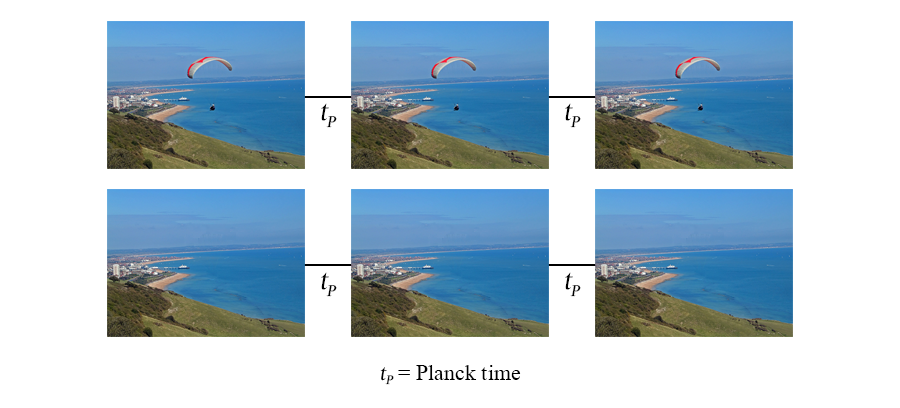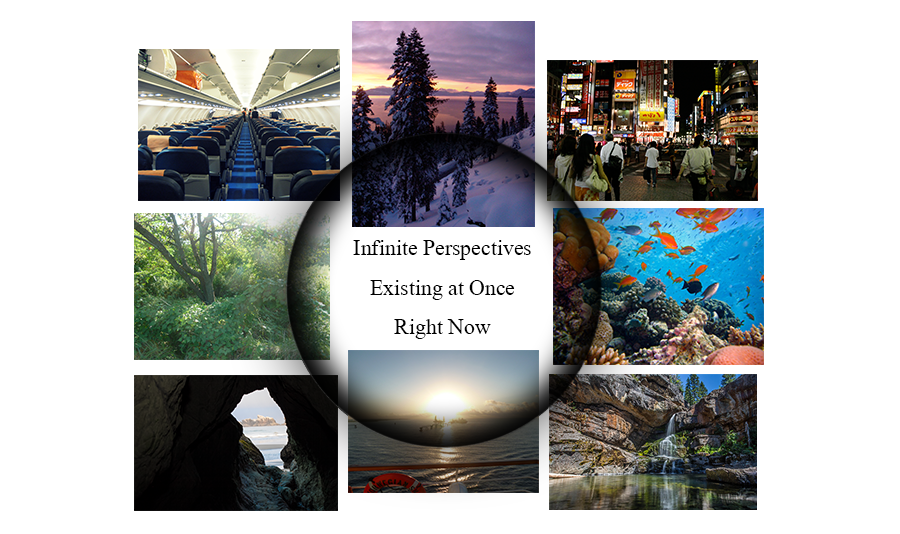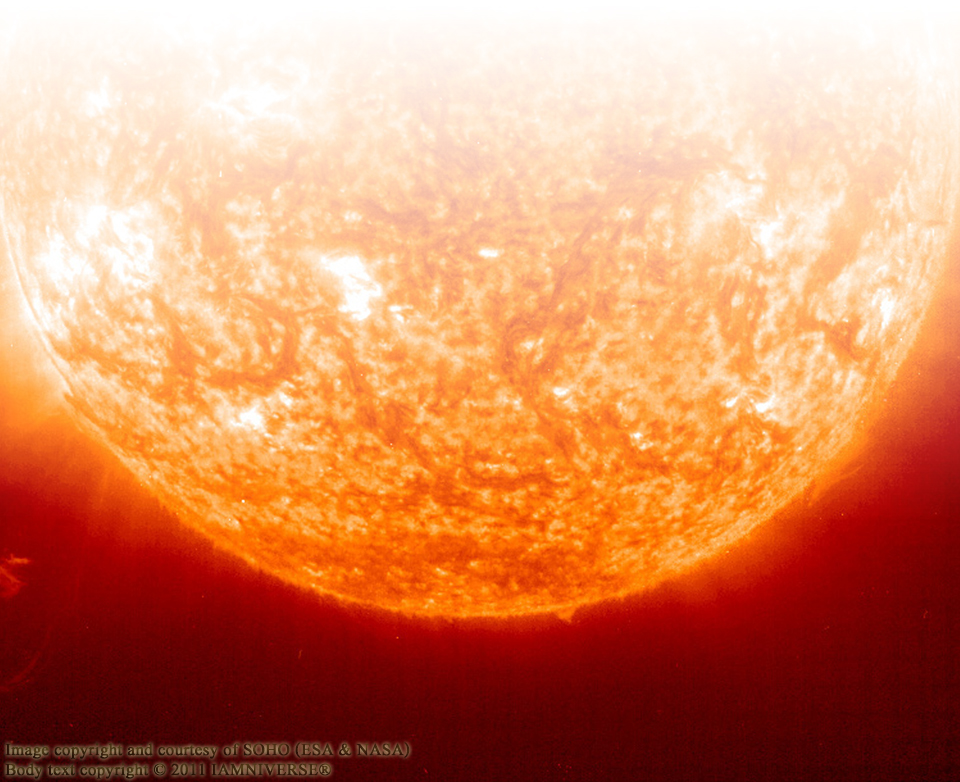There is only one reality existing as one moment, however, that reality-moment constantly changes. This change defines your consciousness’s experience of time. One way to describe this quality of change is to use terms like “Planck-state phenomena.” A Planck-state phenomenon is an object of the past or future. The reality of the present changes using Planck-state phenomena.
Planck-state phenomena are physical things, such as a universe, that build your reality experience of time. In this context, a universe is not the same thing as a reality. “Reality” is the experience of consciousness—a particular reality is a particular state of consciousness, which is expressed as a brain state coupled with a mental state. A world, a universe, a planet, etc. are things that can be experienced within a particular reality.
Reality is timeless, however, because things within reality change, you can have the experience of time by linearly defining the qualities of what you are observing change. Relative to the physical universe, you can define the change of regular, normal matter and energy by the speed of light. Here is a simple diagram:

Each picture in the above diagram represents one state of regular matter. From the human perspective, you could call these states different Planck-state universes. Because regular, normal matter is the type of solidity we all know and love, the above diagram also represents the rate at which you see the visible universe change. (The keyword is visible.) Planck time to Planck time is defining how fast the physical world changes, not how fast you subjectively perceive it to change; it takes your brain millions upon billions of Planck times to generate the perception of one second.
Only through multiple Planck-state universes can you experience the illusions of motion and time within the physical world. Because time doesn’t exist unto itself, you create the experience of time using the change of what you observe in your consciousness. As was stated before, one way to define the rate of change of regular, normal matter is the speed of light. Light moves 1 Planck length per Planck time. Regular, normal matter of the universe changes every Planck time, which is about 10−43 seconds (.0000000000000000000000000000000000000000001 seconds). Your consciousness changes its perspective of the visible matter you see in your environment every Planck time. The succession of these universes (states of matter) is the experience of a timeline, which is your basic experience of time. The diagram below shows two timelines.

Timelines are an experience of multiple Planck-state phenomena—such as Planck-state universes—that define a linear time experience. Timelines can be extremely similar or dissimilar, because one atom difference is still a complete difference.
Planck-state phenomena only exist in relation to a timeline. You cannot consciously realize one Planck-state universe as a human, because it takes billions, trillions, and quadrillions of Planck-state universes to even have the experience of one second.
The linear experience of multiple Planck-state universes is the experience of one timeline. Technically, you cannot experience any other timeline different than the one you are on now; you can only experience one timeline. Even if you managed to create a “spacetime ship” and venture into a reality that symbolized another timeline—such as a parallel Earth wherein your parents never met each other—that experience would take place within one overall timeline. Technically, your parents on that version of Earth aren’t your parents, because your parents exist back on the Earth version you left.
Mechanically speaking, there is only one reality, one moment, and thus only one experiential timeline. The idea of “Planck-state universes” and “timelines” simply helps organize the idea of linear time, which is also mechanically unreal. These ideas of Planck-state universes and timelines are no more “real” than ideas of you existing a minute ago in the past, or an hour from now in the future. All these concepts are ways to explain your multidimensional experience of right now.

All universes and timelines exist right now. By definition, if they did not exist right now, they would not be capable of being experienced because time is an illusion. From the spacetime illusion, it is easy to think that Planck-state universes “go into nonexistence” when they are no longer being observed. From that mental perspective it is true, but mechanically that is a non sequitur. It is a non sequitur in the sense that there is no “where” for them to “go.” The very concept of something “going into nonexistence” is mechanically invalid, because motion, distance, and area are illusions of spacetime, and nonexistence cannot affect what exists. From the spacetime illusion, it is easy to think that because you cannot physically see a universe of the past means it is not “there” or not “here,” but for you to have experienced it at all, whether physically or mentally, means it is here. The way this all works is through a holographic structuring of multidimensionality. In this context, the perception of time flow could be likened to a more complex version of observing a tesseract rotate.


